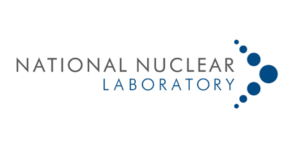
(D.1) Behaviours of irradiation sensitised AGR fuel cladding
Research into the behaviours of irradiation sensitised AGR fuel cladding under moist and dry storage conditions, including the potential impact of stress and the microstructure of the cladding; notably behaviours which could compromise future containment or mechanical strength. This might consider the impact of surface oxides, potential storage-gas compositions and impurities including the influence of variables such as temperature, humidity, radiation dose rate and free or ‘fixed’ moisture presence.
Here NDA is interested in developing and testing modelling approaches, to enhance our understanding of AGR cladding corrosion in air. The following are included as examples to support the development of submissions:
- Models that can be adapted from our pond storage knowledge and explore the mechanistical interaction of thin liquid films or liquid droplets in air with irradiated AGR fuel cladding.
- Thermodynamic modelling of the system – water chemistry, surface chemistry and the combined effect of radiation.
- The use of artificial intelligence (e.g. neural network) modelling to interrogate corrosion data from research programmes or published corrosion data from simulants that resemble AGR cladding (e.g. ideally stainless-steel grades with a similar composition or another stainless-steel grade with an extensive dataset and known irradiated history).
(D.2) Alpha (α) damage and helium
Plutonium and related materials are α active. Each α decay results in local damage to the host material, heat and a helium atom which can subsequently be released, pressurising any sealed systems. Helium pressurisation is a current topic in the lifetime of storage cans. Helium is a factor in the pressurisation of MOX fuel rods during irradiation and subsequent storage/disposal and will also be a factor in immobilisation products and any relationships between α damage and leaching. NDA is interested in proposals in α damage and helium distribution in special nuclear materials, both product powders and engineered ceramics relating to interim storage or final disposal. In particular, the understanding of helium behaviour in wasteforms over the long term after GDF disposal is an important technical challenge to the Disposition programme and NDA intend to undertake further work in this area in partnership with NWS. This will include both experimental and modelling work that can be shown to be relevant to this problem. Any proposals would be ideally targeted at supporting the NDA mission but naturally in any PhD programme there will be an element of skills/ capability development.
(D.3) Absorption of species on fuel precursor powders
Product powders are known to absorb gases from the atmosphere. This can include atmospheric gases such as CO2 or H2O, products of radiolytic reactions such as nitrous oxides or in some cases HCl from degradation of storage packaging. The conditions under which these species remain chemically bound or can be released can impact on continued storage or disposition processes, i.e. during external heating from a calcination or sintering process. However, the details of the chemical bonding to the product surface are not well understood. Recent studies with chlorine-contaminated materials show there are a range of possible chemical states some of which are more readily released during stabilisation treatments, and it is possible for the chlorine to ‘switch’ state over time. Gaining better insights into the nature of bonding between absorbed gases and PuO2 and the conditions under which they remain stable is a further R&D interest. NDA would welcome proposals that seek to understand this issue using characterisation methods that may not readily be available in active laboratories, providing such proposals are within the bounds of radiological protection and other relevant regulation. There is an element of both supporting the mission and capability development anticipated with this proposal area.
(D.4) Plutonium immobilisation
The NDA is currently evaluating production processes for plutonium immobilisation. This includes the manufacture of zirconolite by HIP (Hot Isostatic Pressing) and disposal MOX, manufacture of regular uranium-based MOX fuel but intended for disposal to a GDF, not irradiation.
(D.4a) Immobilisation processes
There is a need to develop and optimise the production processes for immobilised products and the waste formulations used. This can include both optimising the current dry powder routes, e.g. milling, granulation, conventional sintering or examining the relevance of new techniques such as spark plasma sintering (SPS), flash sintering or similar.
The NDA is also interested in novel methods to monitor or characterise powders during processing, e.g. particle size distribution that could be applied to nuclear materials to gain better insight into how powder properties change during fuel or waste manufacturing and the subsequent impact on product quality.
(D.4b) Durability of immobilised products
Linked with manufacturing routes, NDA also welcomes proposals examining the durability of these wasteforms in storage or geological disposal. This could be in terms of the relationships between manufacturing and future durability. For example, any role of ceramic grain size/ porosity distribution in disposal performance or could be examining more fundamental properties of the system, for example, differences in mobility of neutron absorbing and fissile species in a GDF environment.
There is an element of both supporting the mission and capability development anticipated with this proposal area.
(D.5) Preparation of new surrogate materials for AGR cladding.
During nuclear reactor operations Advanced Gas-cooled Reactor (AGR) fuel cladding can undergo changes in physical and chemical properties as a consequence of neutron damage and thermal effects. These changes generally occur at the lower and cooler sections of the AGR fuel stringer and is known as the radiation induced segregation (RIS) phenomenon. This portion of the inventory can be vulnerable to corrosion when exposed to corrosive species and based on historical events, NDA know this portion to be susceptible to intergranular stress corrosion cracking (IGSCC). Since high pH levels have been instated there has been no occurrence of AGR fuel failure. However, this mitigation does not completely remove the risk of localised corrosion to occur, and NDA recognises the need for a detailed understanding of its impact on the AGR fuel lifecycle.
There are broadly two areas where additional material science studies could help us unravel key knowledge gaps:
- A greater understanding of the RIS phenomenon, through the creation of micro engineered materials showing similar RIS features to AGR fuel cladding. Ideally the material will be used to inform where the current RIS model can be developed and to provide alternative means to explore the corrosion behaviour of RIS-affected steels.
- Methods and techniques that could potentially recreate similar failure sites in materials (i.e., similar to IGSCC sites observed in AGR fuel cladding). In this instance NDA will be interested in exploring how the 3D network produced can impact on ingress of water during pond storage and its removal during drying processes.
(D.6) Managing gas generation in sealed containers of fuel
Sealed containers of spent fuel e.g. for storage or disposal of the fuel might, in some circumstances, contain material that could generate gas e.g. water that could undergo radiolysis. This gas generation could have several undesirable consequences, e.g. over-pressurisation of the containers or the formation of flammable gas mixtures within the containers. There is an interest, therefore, in novel methods that could be used to detect, quantify and manage gas generation inside sealed containers of spent fuel.
To apply for the scheme, please click here.

